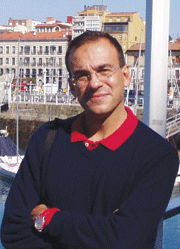E-Archive
Shot Peening in the Automotive Industry
in Vol. 14 - March Issue - Year 2013
Shot Peening, Simulation And Multiaxial Fatigue

Mario Guagliano
One of the most difficult and important problems that automotive engineers have to solve is the so-called "fatigue design" of mechanical components: springs, shafts, crankshafts, and any other engine (and not only) engine components are subjected to cyclic loads that can cause fatigue damage if not correctly designed. Shot peening, as we know, is an effective method to increase fatigue strength without oversizing the mechanical components. Its beneficial action is generally put into relation to the ability of introducing compressive residual stresses in the surface layer of metallic materials. When the load is applied, the total stress field (given by the applied and compressive residual stresses) changes and becomes less severe in the surface layer of material, where fatigue damage starts. Notwithstanding the great number of studies and analysis aimed at defining approaches to assess the effect of shot peening on fatigue strength of machine elements, a complete knowledge on how shot peening residual stresses affects the fatigue behaviour is still far from being achieved. Anyway, even if there is not any criterion universally accepted that can be used to estimate the fatigue strength of peened parts during the design phase, it is possible to refer to results and formulas proven to give good results in well-defined situations and materials.
But there is still at least one field of application where there is a marked gap of knowledge and that needs much, much more investigation. I’m talking about multiaxial fatigue that verifies all the time(s) we have multiple loads acting on a part, inducing a complex state of stress. If the applied loads vary independently (that is to say with different relative phase and frequency), the case becomes still more complex and difficult to be dealt with.This situation is common in several mechanical parts used in cars: shaft, crankshafts, and some kinds of springs are subjected to multiaxial fatigue damage. In many cases, the complexity of the fatigue strength assessment is increased by the complicated geometry of the parts, as in the case of crankshafts. For sure, multiaxial fatigue is a problem without a definitive solution and conservative design criteria have to be used to avoid unexpected failures. The analytical criteria that can be used to assess multiaxial fatigue strength require the calculation of the stress tensor (the matrix that defines the stress components) and the determination of the variation of the shear stress along the so called "critical plane": the plane where fatigue damage takes place, along a fatigue cycle. And that’s not simple, especially for complex geometry.
Even in this case, shot peening is able to strongly increase the fatigue strength of mechanical parts but the definition of analytical design approaches becomes hard. That is to say, if residual stresses induced by shot peening are considered, the case becomes still more difficult to be solved, not only in terms of an analytical development but also from a conceptual point of view. In other words, the mechanisms that make compressive residual stresses beneficial in multiaxial fatigue have to be clarified and the methods used for assessing multiaxial fatigue strength should be improved for the application to shot peened parts.
The powerful computation tools used today to assist, improve, and make the design process faster can be used also to facilitate the calculation of the stress state in complex parts and to introduce the residual stresses in the computational approach. Finite element software combined with powerful computers is a great tool for solving complex cases and to reach a solution. Anyway, the uncertainty related to the gap of knowledge of the role of residual stresses and surface work-hardening induced by shot peening on multiaxial fatigue cannot be filled by any software. It would be great to invest not only in simulation tools but in better knowledge and related experiments as well.
Shot Peening in the Automotive Industry
by Mario Guagliano
Contributing Editor MFN and
Associate Professor of Technical University of Milan
20156 Milan, Italy
E-mail: mario@mfn.li
Author: Mario Guagliano



























